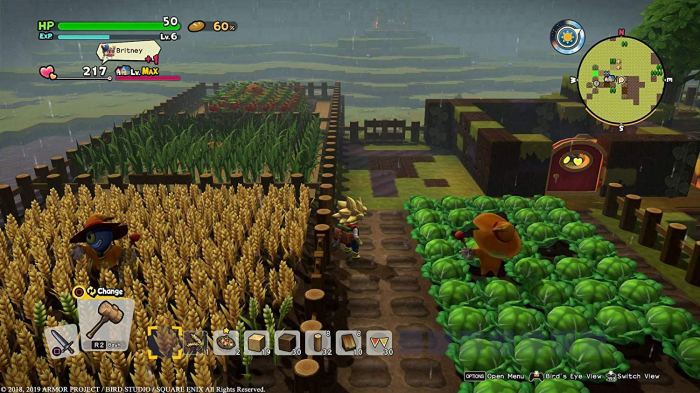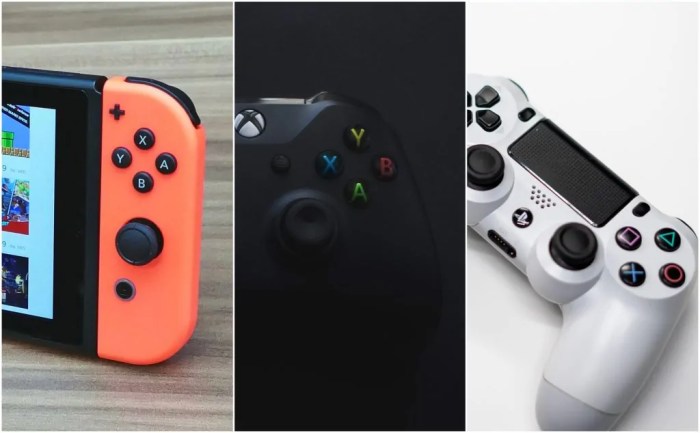
The rise of cross-platform play has revolutionized the online gaming landscape, connecting players across diverse platforms like PC, consoles, and mobile devices. This convergence fosters larger, more vibrant communities, while simultaneously presenting unique technical and design challenges for developers. This exploration delves into the intricacies of cross-platform gaming, examining its advantages, disadvantages, and future potential.
From the technical hurdles of ensuring seamless compatibility between vastly different systems to the impact on game balance and community dynamics, we will analyze successful implementations and explore the ongoing evolution of this increasingly popular feature. We’ll also examine the diverse genres benefiting from cross-platform play, showcasing how it reshapes the gaming experience for both developers and players alike.
Defining Cross-Platform Play

Cross-platform play, also known as cross-play, allows gamers using different gaming platforms (like PlayStation, Xbox, PC, Nintendo Switch, and mobile devices) to interact and play together within the same online game environment. This significantly expands the player base and enhances the overall gaming experience, but achieving it presents significant technical hurdles.Cross-platform play necessitates overcoming considerable technical challenges. Different platforms utilize varying hardware architectures, operating systems, network protocols, and input methods.
Game data needs to be seamlessly transferred between these disparate systems, ensuring consistent gameplay and preventing exploits. Furthermore, achieving balanced gameplay across diverse hardware capabilities requires careful consideration and often involves sophisticated matchmaking and balancing algorithms. The complexity increases exponentially with the number of platforms supported.
Technical Challenges in Enabling Cross-Platform Play
Implementing cross-platform play requires careful consideration of several key technical aspects. Network communication protocols must be standardized to ensure reliable data exchange between different platforms. Differences in input devices (controllers, keyboard and mouse) need to be addressed, potentially requiring input remapping or adjustments to control schemes. Furthermore, achieving consistent performance across varying hardware capabilities necessitates optimized game engines and robust networking infrastructure.
Security measures must also be implemented to prevent cheating and maintain a fair playing environment across all platforms. Finally, legal and licensing agreements between platform holders often need to be negotiated, adding another layer of complexity.
Approaches to Achieving Cross-Platform Compatibility
Developers employ several strategies to overcome the challenges of cross-platform play. One common approach is to utilize a centralized server architecture. This involves a dedicated server that manages all player connections and game logic, regardless of the platform. This server acts as an intermediary, translating data between different platforms and ensuring consistent gameplay. Another approach involves peer-to-peer networking, where players directly connect to each other.
However, this approach is more complex to manage and can be less reliable, especially across diverse network conditions. A hybrid approach, combining elements of both centralized and peer-to-peer networking, can also be employed to leverage the advantages of both methods. The choice of approach depends on factors such as game design, player base size, and available resources.
Examples of Successful Cross-Platform Game Implementations
Several successful games showcase effective cross-platform play implementation. Fortnite, for example, has been highly successful in its cross-platform implementation, allowing players on PC, consoles, and mobile devices to play together seamlessly. Their approach relies on a centralized server architecture, coupled with sophisticated matchmaking algorithms to ensure fair play across different hardware capabilities. Rocket League also demonstrates a successful implementation, utilizing a similar centralized server approach.
Both games prioritize a consistent user experience across platforms, minimizing noticeable differences in gameplay. These successful examples highlight the importance of a well-designed and robust server infrastructure and a thoughtful approach to balancing gameplay across different platforms.
Comparison of Cross-Platform Solutions
| Solution | Advantages | Disadvantages | Example |
|---|---|---|---|
| Centralized Server | Easier to manage, consistent gameplay, better security | Higher infrastructure costs, potential latency issues | Fortnite, Rocket League |
| Peer-to-Peer | Lower infrastructure costs, potentially lower latency | Difficult to manage, less secure, inconsistent gameplay | Less common in large-scale cross-platform games |
| Hybrid | Balances cost and performance, improved scalability | Increased complexity in development and maintenance | Some smaller-scale games |
Popular Cross-Platform Games

Cross-platform play has revolutionized the online gaming landscape, allowing players on different platforms to seamlessly interact and compete. This has led to larger, more diverse player bases and fostered a stronger sense of community. The following examples highlight the impact of cross-platform functionality on several successful games.The success of cross-platform gaming hinges on several factors, including robust server infrastructure capable of handling diverse connections and well-designed in-game systems that ensure fair play regardless of the platform used.
These games demonstrate the successful integration of cross-platform play and its benefits.
Examples of Popular Cross-Platform Games
The following list showcases five popular games demonstrating successful cross-platform integration, categorized by genre. Each game’s description includes details about its gameplay and the benefits of its cross-platform features.
- Fortnite (Battle Royale): A free-to-play battle royale game where 100 players compete to be the last one standing. Cross-platform play allows players on PC, consoles (PlayStation, Xbox, Nintendo Switch), and mobile devices to play together. This massively expanded the player base, creating a larger and more dynamic competitive environment. The unified player pool also ensures quicker match times and a broader range of skill levels to compete against.
- Call of Duty: Warzone (FPS): A free-to-play battle royale spin-off of the Call of Duty franchise. It features intense first-person shooter combat with a focus on strategic team play. Warzone’s cross-platform functionality allows players across PC, PlayStation, Xbox, and mobile (through the mobile version of Call of Duty) to compete in the same matches. This broadens the player pool, making it easier to find matches and fostering a more competitive and diverse community.
- Rocket League (Sports/Action): A unique blend of soccer and vehicular combat, Rocket League features fast-paced gameplay and strategic team play. Cross-platform support extends across PC, PlayStation, Xbox, and Nintendo Switch, resulting in a larger and more active player base. The unified player pool enhances matchmaking, leading to more balanced and exciting matches.
- Minecraft (Sandbox): A massively popular sandbox game allowing players to build and explore vast worlds. Cross-platform play is available on PC, consoles, mobile devices, and even some smart TVs. This accessibility significantly boosted the player base, enabling collaborative world-building and increased opportunities for social interaction among players of all ages and technical abilities.
- Genshin Impact (RPG): An open-world action RPG featuring a vast world to explore, a compelling story, and diverse characters. Cross-platform play allows players on PC, PlayStation, mobile, and even some cloud gaming services to play together, share resources, and complete quests collaboratively. This increased accessibility has fostered a large and active global community, allowing players to connect and cooperate regardless of their chosen platform.
Cross-platform play represents a significant leap forward in online gaming, offering players unparalleled opportunities for connection and competition. While challenges remain in areas such as balancing gameplay across diverse input methods and mitigating potential issues like cheating, the continued innovation in this field suggests a future where such barriers are increasingly overcome. The expanding reach and enhanced social interaction facilitated by cross-platform gaming promise to further enrich and redefine the online gaming experience for years to come.
Question Bank
What are the main technical challenges in implementing cross-platform play?
Key challenges include differences in input methods (controller vs. keyboard/mouse), network architectures, and game engine compatibility. Ensuring fair gameplay across various hardware capabilities also presents significant hurdles.
How does cross-platform play affect game balancing?
Balancing can be complex, as different platforms may offer varying levels of precision and control. Developers often need to carefully adjust gameplay mechanics to ensure fairness across all platforms.
Are there security concerns with cross-platform play?
Yes, increased player interaction across platforms can potentially amplify issues like cheating and hacking if not adequately addressed with robust anti-cheat measures.
Will all online games eventually support cross-platform play?
While the trend is towards increased cross-platform support, it’s not guaranteed for every game. Factors like game engine limitations, licensing agreements, and development costs can influence a developer’s decision.





